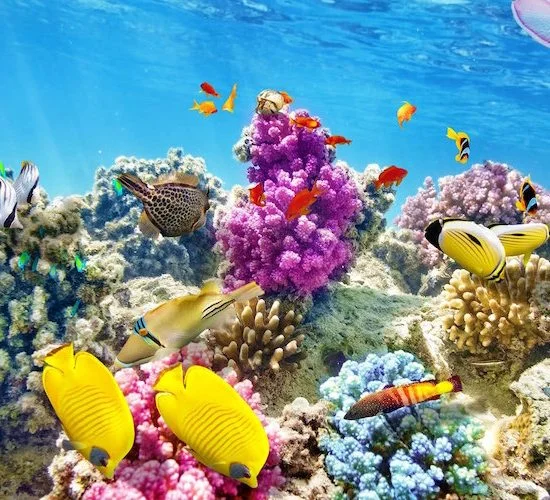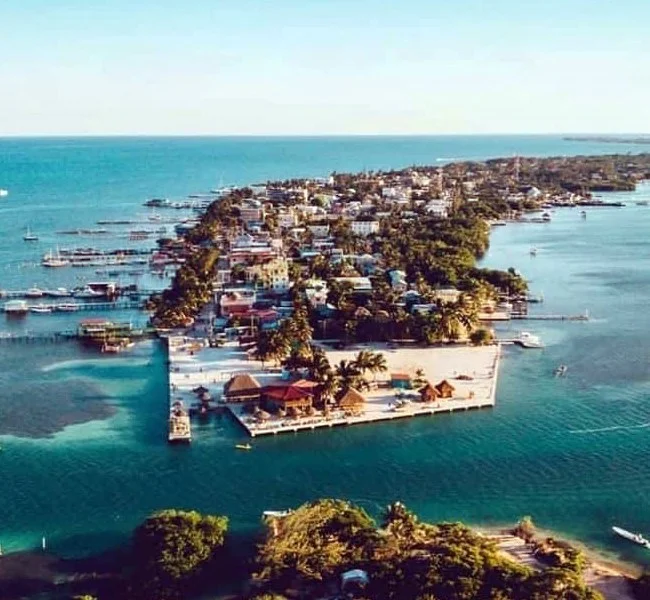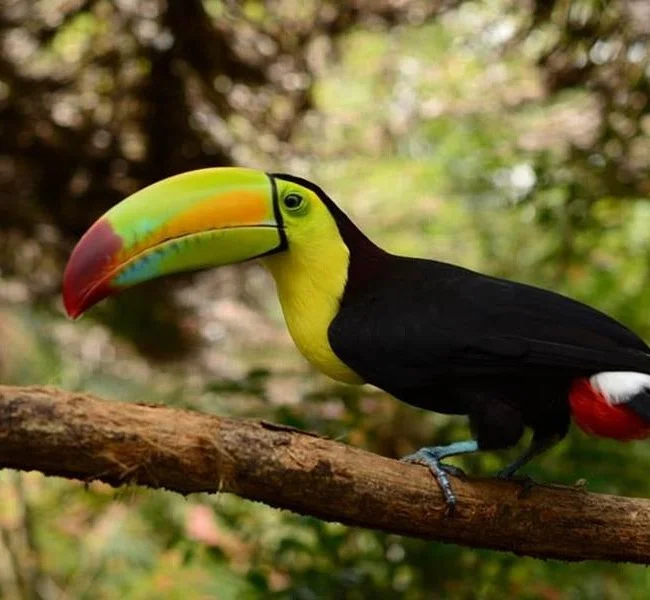
Belize
UTC-6 (Central Standard Time - CST)
No daylight saving time observed
Same time zone nationwide; 1 hour behind Eastern Standard Time (EST) in winter
Belize Dollar (BZD); fixed rate of 2 BZD = 1 USD
U.S. Dollar widely accepted in tourist areas, especially Ambergris Caye
Credit cards (Visa/Mastercard) accepted at most resorts; ATMs available in cities
September 21 (Independence Day)
Marks independence from the UK in 1981 after years as British Honduras
Celebrated with flag-raising, parades, and performances in Belmopan
Visa-Free Countries
Visa on Arrival Countries
E-Visa Countries
Visa Required Countries
Culture
Belize's culture is a vibrant mosaic shaped by centuries of interaction among its diverse peoples. With a population comprising Maya, Garifuna, Creole, Mestizo, East Indian, Chinese, and European descendants, Belize is a melting pot where ancient traditions blend seamlessly with colonial legacies and modern influences. This diversity is expressed through music, dance, art, architecture, literature, and cuisine, creating a unique cultural identity in Central America.
Here’s a deeper look into Belizean culture:
- Musical Traditions: Belizean music is a dynamic fusion of indigenous, African, and Caribbean rhythms. Punta rock, pioneered by the Garifuna, blends traditional punta beats with modern electric guitar, as heard in the works of Andy Palacio, whose album *Wátina* gained global acclaim. Brukdown, a Creole genre, uses donkey jawbones and banjos, reflecting rural life, while soca and reggae are popular in urban areas. Instruments like Garifuna drums (made from mahogany and deer skin), maracas, and turtle shells create distinctive sounds at festivals and gatherings.
- Festivals and Celebrations: Belize hosts a variety of cultural events year-round. Garifuna Settlement Day (November 19) commemorates the 1832 arrival of Garifuna settlers in Dangriga, featuring a reenactment of their landing, drumming marathons, and the dish *hudut* (fish in coconut broth with mashed plantains). The Belize International Film Festival showcases local talent, while the September Celebrations include Independence Day (September 21) and St. George’s Caye Day (September 10), with parades, fire engine sirens, and street parties across the country.
- Visual Arts and Architecture: Belizean art reflects its multicultural roots. Mayan stelae (carved stone slabs) at sites like Caracol depict ancient rulers, while Garifuna artisans craft drums and masks. Colonial architecture shines in Belize City’s Government House (built 1814), a wooden mansion with verandas, and the Holy Redeemer Cathedral, a Gothic Revival gem. Modern Belizean painters like Pen Cayetano, who founded punta rock, also create vivid murals blending African and indigenous themes.
- Literary Traditions: Belizean literature captures the nation’s soul. Zee Edgell’s *Beka Lamb* (1982) explores Creole life and colonial education, earning international praise. Felicia Hernandez’s poetry reflects Mayan heritage, while oral traditions thrive—Garifuna *dügü* ceremonies preserve ancestral stories, and Mayan elders recount creation myths like the Popol Vuh. The National Library Service promotes local writers through annual literary contests.
- Cultural Diversity: Belize’s ethnic mix includes the Creole (descendants of African slaves and British settlers), Garifuna (Afro-Indigenous from St. Vincent), Maya (Yucatec, Mopan, and Q’eqchi’ groups), Mestizo (Spanish-Indigenous), and smaller East Indian and Mennonite communities. English is official, but Belizean Creole (Kriol), Spanish, Garifuna, and Mayan languages are widely spoken, with Kriol phrases like “Weh yuh deh?” (“Where are you?”) common in daily life.
Belizean cuisine is a flavorful testament to its cultural diversity:
- Regional Specialties: In the north, Mestizo influence brings tamales wrapped in banana leaves and *escabeche* (onion soup with chicken). The south’s Garifuna offer *sere* (coconut fish soup) and cassava bread, grated and baked from the yucca root. Creole dishes like stewed chicken with rice and beans (cooked with coconut milk) dominate the central region, while coastal areas serve lobster, conch fritters, and shrimp ceviche, especially during the June-July lobster season.
- National Dishes: “Boil-up” is a one-pot wonder of fish, eggs, yams, plantains, and cassava, served with a peppery sauce. “Fry jacks,” puffy fried dough, pair with refried beans, eggs, or jam for breakfast. *Garnaches*—crisp tortillas topped with beans, cheese, pickled onions, and habanero sauce—are a street food staple, reflecting Belize’s love for bold flavors.
- Street Food Culture: Markets in Belize City, San Ignacio, and Placencia buzz with vendors selling *salbutes* (fried tortillas with shredded chicken), *panades* (fish-filled turnovers), and *tamalitos* (small steamed corn cakes). Fresh ceviche, marinated with lime and cilantro, is a coastal favorite, often enjoyed with plantain chips. Prices are affordable, typically $1-3 BZD per item.
- Beverages: Belizean rum, like Traveller’s One Barrel (aged with oak) and Cuello’s Caribbean Rum, is a local pride, often mixed with pineapple juice in cocktails. Belikin Beer, brewed since 1969, comes in lager, stout, and seasonal chocolate stout varieties. Fresh juices from mango, soursop, and watermelon abound, while *seaweed shakes* (blended with condensed milk and nutmeg) are a Garifuna health tonic. Coffee, grown in the Toledo District, is emerging as a specialty.
Tourism & Best Sites to Visit
Belize is a treasure trove of natural wonders and historical sites, offering something for every traveler—divers, history buffs, nature lovers, and those seeking relaxation. Its compact size (about 180 miles long and 68 miles wide) allows visitors to experience jungles, reefs, and ruins in one trip, all framed by a laid-back Caribbean vibe.





Great Blue Hole: Located 60 miles off Belize’s coast within Lighthouse Reef, this circular sinkhole plunges 410 feet deep and spans 1,000 feet across. Formed during the Ice Age, it’s renowned for its stalactites and clear waters, revealing sharks, groupers, and barracudas. Jacques Cousteau popularized it in 1971, and today, dive tours from Ambergris Caye offer a bucket-list experience within the UNESCO-listed Belize Barrier Reef Reserve System.
Xunantunich: Perched near the Mopan River in Cayo District, this Mayan city flourished from 600-1000 AD. Its centerpiece, El Castillo, rises 130 feet, adorned with friezes of jaguars and gods, offering views into Guatemala. Accessible by a hand-cranked ferry from San José Succotz, it includes six plazas and 26 structures, with ongoing excavations revealing burial sites and ceramics.
Belize Barrier Reef: Stretching 190 miles along Belize’s coast, this UNESCO World Heritage Site is the planet’s second-largest coral reef system. It harbors 500 fish species, 100 coral types, and endangered creatures like manatees and hawksbill turtles. Snorkeling hotspots include Hol Chan Marine Reserve near Ambergris Caye, where nurse sharks and stingrays thrive, and Glover’s Reef, one of three atolls.
Caye Caulker: This 5-mile-long island, 20 miles northeast of Belize City, epitomizes barefoot bliss with its “Go Slow” motto. No cars—just golf carts and bikes—navigate its sandy streets. The Split, a channel carved by Hurricane Hattie in 1961, is a swim spot, while nearby reefs offer snorkeling with eagle rays. Lobsterfest in July draws crowds with fresh seafood and live music.
Belize Zoo: Founded in 1983 near Ladyville, this 29-acre sanctuary houses over 170 native animals rescued from the pet trade or injury, including jaguars, ocelots, howler monkeys, and keel-billed toucans (Belize’s national bird). Its natural enclosures mimic jungle habitats, and conservation programs, like jaguar rehabilitation, educate visitors. Night tours reveal nocturnal species like tapirs.
Transportation
Belize’s compact geography and mix of transport options make it accessible, whether you’re hopping between cayes or exploring inland jungles. Most travel hubs around Belize City, with roads, boats, and planes connecting key destinations.
- Inter-island Travel: Water taxis from Belize City’s Marine Terminal (e.g., San Pedro Belize Express) run hourly to Caye Caulker (45 minutes, $15 USD) and San Pedro (90 minutes, $20 USD). Small Cessna flights by Tropic Air take 20 minutes to Ambergris Caye, offering aerial views of the reef.
- Air Travel: Tropic Air and Maya Island Air operate 12-seater planes from Belize City’s Municipal Airport to San Pedro, Placencia, Dangriga, and San Ignacio. Flights run every 1-2 hours; a one-way ticket to San Pedro costs ~$75 USD. Schedules align with tourist demand, with extra flights during peak seasons.
- Water Transportation: Beyond scheduled water taxis, private charters from operators like Island Ferry Belize serve remote cayes like Tobacco Caye. Resorts on private islands (e.g., St. George’s Caye) often include boat transfers, while fishing boats in Placencia double as transport for short trips.
- Public Transportation: Colorful repurposed school buses ply the Philip Goldson, George Price, and Hummingbird Highways, linking Belize City to Belmopan (1 hour, $2.50 BZD), San Ignacio (2 hours, $4 BZD), and Punta Gorda (6 hours, $12 BZD). Departures are frequent but unscheduled—buses leave when full.
- Taxis and Ride Services: Green-plated taxis in Belize City, San Ignacio, and Belmopan charge $5-10 BZD for short trips; negotiate fares upfront as meters are rare. No Uber or Lyft exists, but local drivers often offer private tours (e.g., $50 USD to Xunantunich).
- Car Rental: Agencies like Budget and Crystal Auto Rental at Philip S.W. Goldson Airport rent compact cars ($50 USD/day) and 4WDs ($75 USD/day) for rugged roads like those in the Mountain Pine Ridge. Gas stations are plentiful on highways (fuel ~$5.50 BZD/gallon), but rural areas require planning.
Airports
Belize’s airports range from a bustling international hub to tiny airstrips, facilitating travel across its districts and islands.
- Philip S.W. Goldson International Airport (BZE): Located 10 miles from Belize City in Ladyville, BZE handles 1 million passengers annually. International carriers include American Airlines (Miami, Dallas), Delta (Atlanta), United (Houston), and WestJet (Toronto). Facilities include duty-free shops, a food court with local eateries like *Fry Jack Shack*, car rentals (Avis, Hertz), and taxi stands ($25 USD to Belize City). Tropic Air and Maya Island Air connect to domestic destinations from here.
- Domestic Airstrips: San Pedro Airstrip on Ambergris Caye, with its 3,000-foot runway, serves hourly flights to Belize City (20 minutes, $75 USD). Caye Caulker’s grass strip handles smaller planes, while Placencia’s modernized airstrip supports flights to Dangriga and Punta Gorda. San Ignacio’s Matthew Spain Airport links the Cayo District, ideal for ruin explorers. All are small, with open-air terminals and minimal amenities.
Visa & Travel Information
Belize welcomes tourists with lenient entry policies and a warm, English-speaking environment, though preparation ensures a smooth visit.
Visa Requirements by Nationality
| Nationality | Entry Option | Maximum Stay |
|---|---|---|
| USA, Canada, UK | Visa-Free | Up to 30 days; extendable to 6 months ($25 BZD/month) |
| European Union | Visa-Free | Up to 30 days; Schengen countries included |
| CARICOM members | Visa-Free | Up to 30 days; e.g., Jamaica, Trinidad |
| Australia, NZ | Visa-Free | Up to 30 days; extendable at immigration offices |
| Other countries | Visa Required | Varies; apply at Belizean embassies (e.g., China, India) |
Entry Requirements: Passports must be valid for 6 months beyond entry date. Visitors need a return ticket or proof of onward travel (e.g., bus to Guatemala) and evidence of funds ($75 USD/day, via bank statement or cash). Immigration requires an address in Belize (e.g., hotel booking). No visa fees for visa-free entries; extensions cost $25 BZD/month at offices in Belmopan or Belize City.
Health Considerations: No mandatory vaccines, but CDC recommends hepatitis A, typhoid, and malaria prophylaxis for rural areas (e.g., Cayo, Toledo). Mosquito repellent is essential year-round due to dengue and Zika risks; peak season is June-November (rainy). Tap water is potable in Belize City and tourist areas, but bottled water ($1 BZD/liter) is advised elsewhere. Private clinics like Belize Medical Associates in Belize City handle emergencies.
Safety Considerations: Belize is safe for tourists, but Belize City’s southside has higher crime rates (pickpocketing, theft). Avoid flashing valuables or walking alone at night there. Rural areas and cayes are peaceful; petty theft is rare. Hurricanes (June-November) may disrupt travel—check forecasts via Belize’s National Emergency Management Organization (NEMO).
Currency and Payments: Belize Dollar (BZD) is pegged at 2:1 with USD; both are legal tender. ATMs dispense BZD in cities (Scotiabank, Belize Bank), with $2 BZD fees. Credit cards work at resorts and big restaurants, but small vendors and rural areas are cash-only. Exchange rates at banks favor USD slightly over casas de cambio.
Communications: DigiCell and Smart offer 4G in cities and tourist zones; a prepaid SIM with 5GB data costs $15 BZD. Wi-Fi is free at hotels, cafes (e.g., The Split on Caye Caulker), and airports. International roaming is pricey—AT&T charges $2 USD/day. Landlines are rare; WhatsApp is widely used for local contact.
Practical Tips: Belize uses CST (UTC-6) year-round; power is 110V/60Hz with Type B plugs (U.S.-style). Dress is casual—shorts, sandals, and breathable fabrics suit the 75-90°F tropical climate. Bargaining is uncommon except at markets. Tipping is 10-15% at restaurants if service isn’t included. Respect indigenous customs—ask before photographing Maya or Garifuna rituals.

